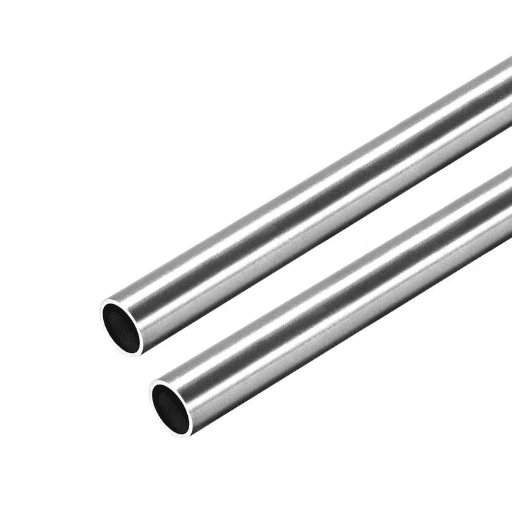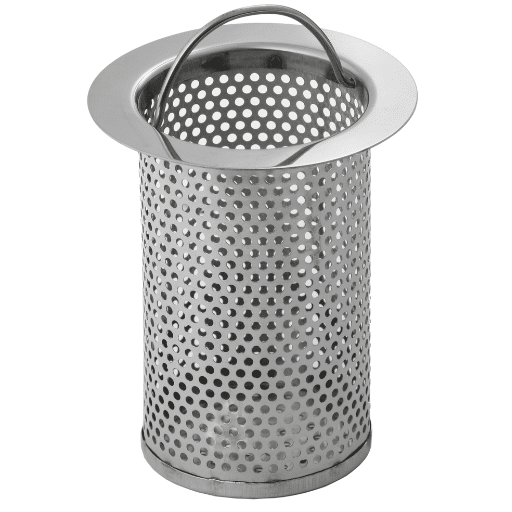In industries where the utmost standards of hygiene and integrity are a necessity, such as food and beverage, pharmaceuticals, and biotechnology, sanitary tubing is of great importance. Stainless steel sanitary tubing is manufactured in such a way that it surpasses the strictest sanitary standards. Therefore, it is used for the safe and contamination-free transfer of liquids and gases. However, what is the reason for the indispensability of this tubing, and how to evaluate the material or the standard that fits your requirements? In this piece, we are going to take a deep dive into the domain of stainless steel sanitary tubing, its multiple usages, the materials that contribute to its dependability, and the quality enforcement through industry standards. No matter if you are a production manager, an engineer, or a professional in the industry, this manual is going to equip you with the knowledge to make wise choices and keep your operations at the highest sanitary standards.
Introduction to Sanitary Tubing
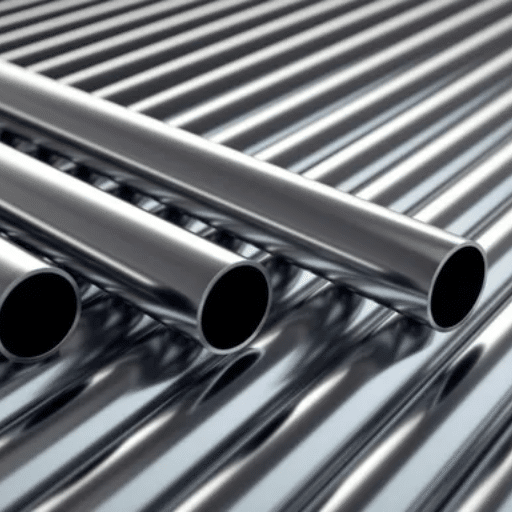
In industries where cleanliness and hygiene are prioritized, such as food and beverage, pharmaceuticals, and biotechnology, sanitary tubing is an essential part. It is created specifically to transfer liquids, gases, or other substances without any contamination, thus guaranteeing the safety and quality of the product. At present, high-quality stainless steel is the usual material for sanitary tubing because it is long-lasting, has excellent resistance to rust, and is easy to clean. Therefore, it complies with rigorous regulations and safety standards. The smooth inner surface of the tubing reduces the possibility of dirt build-up and bacterial growth, hence making it a crucial option for hygiene maintenance in delicate operations.
Definition of Sanitary Tubing
Sanitary tubing is mainly applied in sectors where cleanliness and hygiene are major concerns. Food and beverage production, pharmaceutical manufacturing, biotechnology processes, and dairy operations are some of its common applications. The smooth, non-porous surface of the tubing guarantees that sensitive materials like liquids, gases, or semi-solids are transported safely without risk of contamination and with the products’ integrity preserved. Recent data indicate that the sanitary tubing market has experienced a considerable increase in demand as a result of more stringent regulatory standards and a higher focus on product safety in different industries worldwide. Moreover, the development of modern manufacturing processes has allowed for the creation of sanitary tubing that is both more precise and more durable, thereby making it a critical element in the current high-tech and safety-centric environments.
Importance in Various Industries
Sanitary tubing is very significant for guaranteeing safety and efficiency in many industries. The fact that it maintains the hygienic quality of the products and prevents spoilage has caused it to be the main one used. Here are five major industries where sanitary tubing is really important:
Food and Beverage
The food and beverage sector depends a lot on sanitary tubing as a means for the company to meet the very high health and safety standards. It allows the liquid transfer from one place to another, with the liquids being milk, juices, and alcoholic beverages, without the risk of contamination. The tubing market for food-grade is expected to be a $3.5 billion one by the year 2030, as consumers are getting more and more aware of the quality of the products they are consuming, and thus, the demand for quality-assured products is expected to increase.
Pharmaceuticals
Sanitary tubing is a must for the transportation of materials with the highest sensitivity, like medicines and vaccines. The pharmaceutical sector is estimated to have a growth of 11.3% through 2028, and this is the reason that the demand for tubing that is resistant to corrosion and can be sterilized is not just large but continues to grow. Its use not only helps keep the quality of the product intact but also complies with the most stringent requirements of the regulatory bodies.
Biotechnology
The biotechnology industry needs tubing that is super hygienic and precise for processes like cell culture, fermentation, and filtration. High-purity sanitary tubing guarantees the success of these critical applications without compromising sterility. Transformation in biopharmaceuticals is one of the factors that have made this industry grow exponentially, hence the increased use of sanitary equipment.
Chemical Processing
Sanitary tubing is not only a means of keeping poisonous or delicate chemicals under good control while safety procedures are being followed but also a means of avoiding that and protecting both the environment and the workers. The global chemical market is estimated to be worth over $5 trillion, and therefore, the demand for high-quality tubing solutions keeps on increasing.
Cosmetics and Personal Care
In the beauty industry, it is extremely important to keep the purity of creams, lotions, and serums. Sanitary tubing is a compliance measure as it helps the company meet the regulatory standards on quality and at the same time outputs consumers with safe, high-quality products. The global cosmetics market, which is worth more than $500 billion, is putting more emphasis on the point about need for waterproof sanitary systems This has made it even harder to ignore the importance of reliable sanitary systems in this sector.
These five industries are examples of that and others show that sanitary tubing has become a necessity rather than a luxury, as it aids in making many processes more efficient and safe at the same time while observing the requirements set by health standards. The trend of increasing consumer demands and the tightening of regulations globally are two factors that are powering the rising significance of the issue.
Overview of Stainless Steel Sanitary Tubing
Stainless steel sanitary tubing is a material that has vital importance in keeping industries like food and beverage, pharmaceuticals, cosmetics, and biotechnology clean and hygienic. The material’s distinctive features give it a lot of advantages in cleanliness, durability, and corrosion resistance, demanding applications. Below are the major features and details of stainless steel sanitary tubing:
Corrosion Resistance
Stainless steel’s wonderful property of corrosion resistance allows its use in the very harshest of environments where there is constant exposure to products of very low pH, cleaning agents, or high humidity.
Durability and Strength
This tubing is robust and strong, and its mechanical strength is outstanding, guaranteeing very reliable performance even in very hard conditions including high-pressure systems where the temperature is constantly rising.
Smooth Interior Surface
The interior of sanitary tubing is polished to the highest standard so that no crevices or imperfections can be observed. This greatly reduces the possibility of contamination and also makes cleaning a lot easier.
High Temperature Tolerance
Stainless steel tubing can handle extremely high and low temperatures so it can be applied both in the sterilization processes and high-temperature production systems.
Compliance with Standards
Stainless steel sanitary tubing is made in accordance with the international standards such as ASTM A270 and ASME BPE guaranteeing its use in regulated industries.
These properties not only make stainless steel sanitary tubing a critical component of processes that impose rigorous hygiene and efficiency standards but also allow for its continued application in diverse sectors due to its versatility and trustworthiness.
Applications of Sanitary Tubing
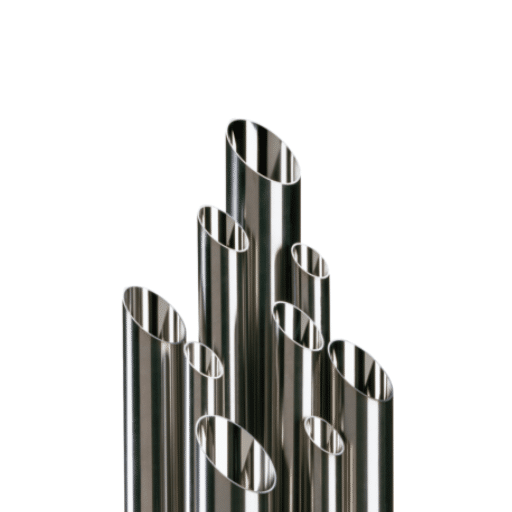
Stainless steel sanitary tubing is a material that has its place in many industries and in the most demanding processes where hygiene and accuracy are required. Here are five principal applications of sanitary tubing:
Food and Beverage Processing
Sanitary tubing is a must in the production process of food and beverages to guarantee no contamination during liquid and other substances. Applications include the cases of dairies, breweries, and soft drink factories, where hygiene practices are of utmost importance.
Pharmaceutical Industry
In the production of pharmaceuticals, sanitary tubing guarantees the sterile transfer of liquids, active ingredients and solutions, thus playing a crucial role in the enforcement of compliance with rigorous regulatory standards such as cGMP.
Biotechnology
With the biotech industry, the sanitary tubing sector gets most of its business for the activities of fermentation, purification, and transport of sensitive biological materials that are sensitive. The stainless steel’s non-corrosive quality ensures no contamination, thus maintaining the process’s integrity.
Cosmetics Manufacturing
Tubes of the sanitary type are deployed in the production of cosmetics and personal care items to process substances such as lotions, creams, and gels, thereby guaranteeing that the products are not only free from contaminants but also qualified according to the established standards.
Chemical Processing
Sanitary tubing is a common factor in chemical processing plants as it is the prime way for transferring chemicals safely, especially in very clean and/or hazardous and corrosive materials situations. Its resistance to high temperatures along with its durability qualities has made it the most suitable material for this kind of job.
These five different applications demonstrate the necessity of sanitary tubing in the industries worldwide that are critical and have the highest demand.
Sanitary Tubing in the Beverage Industry
Sanitary tubing is an integral part of the beverage industry from the standpoint of safety, efficiency, and quality. It is because of the characteristic that it can survive tough conditions and at the same time meet very high hygiene standards that it is used in almost all the processes. So, let us take a look at five hospitable applications of sanitary tubing in the beverage industry:
Transporting Liquids
It is the main use for sanitary tubing in the beverage industry to transfer and ensure that the raw materials like water, juices, milk, and syrups are processed in different stages without any contamination.
Carbonated Beverage Production
Of course, for carbonated drinks like soda, sanitary tubing is on the spot to aid the gas and liquid high-pressure handling that will be safe without the product’s or the equipment’s integrity being compromised.
Brewing and Distillation
Sanitary tubing is also among the tools that breweries and distilleries use to maintain clean and sterile environments during fermentation and distillation processes. Thus, the end product gets the quality and safety requirements met.
Cleaning-In-Place (CIP) Systems
The automated use of sanitary tubing in CIP systems ensures complete hygiene by thorough cleaning of the system without the need for disassembly.
Filling and Packaging Operations
It is a pure sanitary tubing during bottling or canning of soft drinks that guarantees a controlled and contamination-free transfer of drinks maintaining the integrity of the product and extending its shelf life.
These applications indeed illustrate the necessity of the sanitary tubing in the industrial scale of high-quality and safe beverage production.
Usage in Food Processing
Sanitary tubing plays a crucial role in various food processing applications, ensuring hygiene, safety, and efficiency throughout the production process. Below are five key applications of sanitary tubing in food processing:
- Milk and Dairy Products:
Used to transport milk, cream, yogurt, and other dairy products in a contamination-free environment, preserving freshness and quality. - Juice and Beverage Production:
Facilitates the hygienic transfer of fruit juices, sodas, and other beverages, maintaining their flavor profiles and ensuring sterility during production. - Meat and Poultry Processing:
Ensures clean and efficient transfer of liquids, brines, or marinades, reducing the risk of bacterial contamination in meat and poultry handling. - Liquid Sweeteners and Syrups:
Enables smooth and controlled transport of viscous liquids like syrups, honey, and liquid sweeteners while preventing crystallization or contamination. - Sauces and Dressings:
Supports the sanitary movement of liquids like ketchup, mayonnaise, and salad dressings, delivering consistent quality and meeting food safety standards.
These applications demonstrate the indispensable role of sanitary tubing in maintaining hygiene and regulatory compliance within the food processing industry.
Pharmaceutical and Biotechnology Applications
Sanitary tubing is crucial in the pharmaceutical and biotechnology industries due to the high standards of hygiene, precision, and contamination prevention required in these fields. Below are five key applications:
- Sterile Fluid Transfer: Sanitary tubing is vital for transferring sterile liquids such as saline solutions, vaccines, and other injectable drugs, ensuring no contamination occurs during the process.
- Bioreactors and Fermentation: Used in bioreactors to maintain sterile conditions, sanitary tubing supports the controlled growth of microorganisms or cells for producing antibiotics, enzymes, and other biopharmaceutical products.
- Drug Manufacturing: Facilitates the safe handling of active pharmaceutical ingredients (APIs) and excipients during drug formulation, minimizing the risk of cross-contamination and ensuring product purity.
- Purified Water Systems: Ensures the transfer of purified water and water-for-injection (WFI), critical for both manufacturing and cleaning processes in compliance with stringent regulatory standards.
- Filtration and Separation Processes: Plays a significant role in filtration systems for separating impurities and achieving the high purity levels required in pharmaceutical and biotech products.
These applications highlight the essential contribution of sanitary tubing in meeting the exceptional cleanliness and precision demands of the pharmaceutical and biotechnology sectors.
Benefits of Stainless Steel Sanitary Tubing
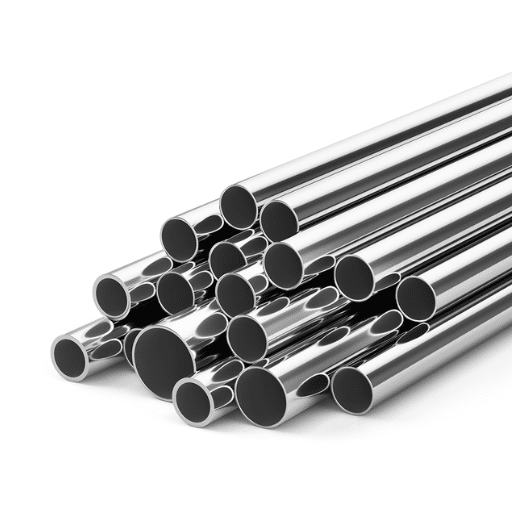
- Corrosion Resistance: Stainless steel sanitary tubing is highly resistant to corrosion, ensuring durability and reliability even when exposed to harsh chemicals or high-moisture environments. This makes it an ideal choice for maintaining the integrity of sensitive pharmaceutical and biotech processes.
- High-Temperature Tolerance: Stainless steel can withstand extreme temperatures, making it suitable for applications involving sterilization and other processes requiring heat, without compromising its structural integrity.
- Easy to Clean and Maintain: The smooth and non-porous surface of stainless steel sanitary tubing promotes easy cleaning and sterilization. This ensures compliance with stringent hygiene standards and minimizes contamination risks.
- Long Service Life: Thanks to its robust material properties, stainless steel provides a long lifespan. It reduces the need for frequent repairs or replacements, leading to lower long-term operational costs.
- Sustainability: Stainless steel is 100% recyclable, making it an environmentally friendly material option. Its recyclability contributes to sustainable practices within pharmaceutical and biotechnology industries while supporting eco-conscious goals.
Corrosion Resistance and Durability
Corrosion Resistance and Durability: Stainless steel sanitary tubing offers exceptional corrosion resistance and durability due to its high chromium and nickel content.
|
Key Point |
Details |
|---|---|
|
Material |
Stainless steel |
|
Key Alloys |
304, 316, 304L, 316L |
|
Resistance |
Corrosion, Heat, Abrasion |
|
Durability |
Long-lasting, Hygienic |
|
Applications |
Food, Pharma, Biotech |
Hygienic Properties and Purity
Hygienic Properties and Purity: Sanitary tubing ensures high purity and hygiene with smooth, crevice-free interiors that resist bacterial growth and facilitate easy cleaning.
|
Key Point |
Details |
|---|---|
|
Material |
High-quality stainless steel |
|
Design |
Smooth, crevice-free interiors |
|
Standards |
ASTM A270 compliant |
|
Resistance |
Bacterial growth |
|
Applications |
Food, Pharma, Biotech |
Ease of Maintenance and Cleaning
Sanitary tubing has undergone a design transformation making maintenance and cleaning extremely easy. This, in turn, leads to the best performance and hygiene. The tubes have very smooth and crevice-free insides that not only help to prevent the accumulation of residues and growth of microbes but also make CIP and SIP procedures very effective. It is the common practice in the manufacturing of sanitary tubes according to the latest industry standards to give the polished interior surface a roughness (Ra value) that falls below 20 microinches (0.5 µm). Thus, superiority in cleanliness is guaranteed.
Main Benefits of Maintenance and Cleaning
Durability and Resistance: Premium stainless steel which is usually the grades 304 or 316L is very tough and can withstand even strong cleaning solutions repeatedly applied without corrosion occurring. It lasts long.
Cleaning Efficacy: The downtime is very small because of CIP processes, the system is automatically cleaned without disassembly. This saves time and reduces the cost of labor.
Greener Solutions: The amount of water used in the CIP systems has been greatly reduced in recent years, with the research indicating that through the use of optimized cleaning cycles, cutting down the water usage at times up to 30% is possible.
Compliance With Safety: Being regularly cleaned and sanitized ensures that sanitary tubes meet the requirements set forth by the FDA and EHEDG (European Hygienic Engineering & Design Group) for industries using sensitive products, like the case of food and pharmaceuticals.
There are also innovative advancements such as the development of automated sensors that keep track of the cleanliness level of tubing systems and give real-time feedback, hence improving the overall maintenance process. Thanks to these technologically sharpened features, sanitary tubing continues to be an essential part of hygiene-sensitive applications.
Materials and Specifications for Sanitary Tubing
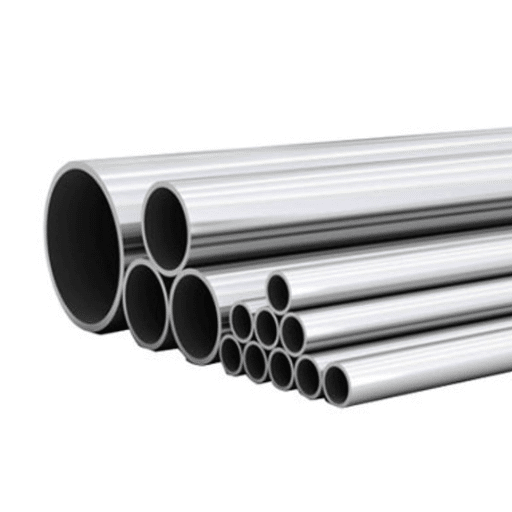
Sanitary tubing is manufactured using high-grade materials to meet stringent hygiene and durability requirements. The most commonly used material is stainless steel, particularly grades like 304 and 316L, known for their corrosion resistance, strength, and ability to withstand repeated cleaning processes. Among these, 316L stainless steel is often preferred for its enhanced resistance to pitting and crevice corrosion, especially in environments involving chlorides or acidic solutions.
Common Specifications:
- Surface Finish:
-
- Internal surface finish is critical for hygiene and cleanability.
- Typical roughness average (Ra) requirement:
-
- 0.8 µm Ra for standard applications.
- 0.4 µm Ra or better for ultra-pure applications such as pharmaceutical production.
- Dimensions:
-
- Tubing is available in a range of diameters, with standard sizes typically ranging from 1/2 inch to 8 inches.
- Wall thickness varies depending on the application, ensuring compatibility with pressure requirements.
- Certifications:
-
- Tubing adheres to standards such as:
-
- ASTM A270 or ASME-BPE, specifically for sanitary and high-purity applications.
- EHEDG and 3-A standards, focusing on food and pharmaceutical safety.
- Pressure Ratings:
-
- Sanitary tubing is designed to handle pressures up to several hundred psi, based on size and wall thickness. For instance:
-
- 1-inch tubing with a wall thickness of 0.065 inches typically supports pressures up to 3040 psi.
- Weldability:
-
- Most sanitary stainless tubing is offered in seamless or welded forms.
- Welded tubing provides cost-effectiveness and consistent dimensions, while seamless tubing is preferred in scenarios demanding the highest levels of purity.
Additional Features:
Modern sanitary tubing also comes with the option for electropolishing, further enhancing its surface smoothness and resistance to microbial contamination. This makes it particularly suitable for the strict requirements of semiconductor or biopharmaceutical industries.
By leveraging the right material and adhering to established specifications, sanitary tubing ensures optimal performance in hygiene-critical environments.
Types of Stainless Steel Used (304 vs. 316)
Types of Stainless Steel Used (304 vs. 316): 304 is economical and versatile, while 316 offers superior corrosion resistance, especially in chemical and saline environments.
|
Key Point |
304 Stainless |
316 Stainless |
|---|---|---|
|
Cost |
Lower |
10–30% higher |
|
Corrosion |
Moderate resistance |
High resistance |
|
Environment |
General use |
Acidic, saline |
|
Applications |
Food, general industries |
Pharma, chemicals |
|
Composition |
No molybdenum |
Contains molybdenum |
Understanding Wall Thickness and OD
Wall thickness and outer diameter (OD) are critical aspects to consider in selecting materials like stainless steel, especially for various industrial and structural applications. The wall thickness refers to the measurement of the tube or pipe’s sidewall, while the outer diameter is the total distance across the outer surface. These dimensions influence the strength, weight, and flow capacity of a tube or pipe.
Importance of Wall Thickness
Wall thickness determines the durability and pressure rating of a pipe. Thicker walls can withstand higher pressures and are better suited for heavy-duty applications. For example, Schedule 40 and Schedule 80 pipes, which differ in wall thickness, are commonly used in industries like oil and gas or water treatment depending on pressure requirements.
|
Schedule |
Nominal Size (in) |
Wall Thickness (in) |
|---|---|---|
|
Schedule 40 |
1 |
0.133 |
|
Schedule 80 |
1 |
0.179 |
Role of Outer Diameter
The OD influences compatibility and how the pipe fits into systems requiring precise connections. OD sizes range widely, from as small as 1/8 inch for instrumentation tubing to several feet for large-scale pipelines used in infrastructure projects.
|
Application |
Outer Diameter Range |
|---|---|
|
Instrumentation and medical tubing |
0.125″ – 1″ |
|
Structural and industrial piping |
2″ – 48″ or more |
Combining Wall Thickness and OD
The combination of wall thickness and OD determines the strength-to-weight ratio, efficiency in fluid handling, and suitability for corrosive or high-pressure environments. For instance:
- Pipes for chemical facilities often require thick walls and precise ODs to handle hazardous materials securely.
- Thin-walled tubes with small ODs, primarily in stainless steel, are common in aerospace or automotive designs for their lightweight and high-performance characteristics.
By carefully evaluating both wall thickness and OD, engineers and designers ensure materials meet the demands of diverse operating environments. Selecting the ideal combination also improves safety, optimizes performance, and reduces lifecycle costs.
ASTM and ASME Standards: A270 and BPE
ASTM and ASME Standards: A270 and BPE: ASTM A270 focuses on hygienic tubing for general industries, while ASME BPE is tailored for ultra-high-purity bioprocessing applications.
|
Key Point |
ASTM A270 |
ASME BPE |
|---|---|---|
|
Focus |
Hygienic tubing |
Bioprocessing |
|
Surface Finish |
General requirements |
Ultra-high purity |
|
Applications |
Food, Pharma |
Biotech, Pharma |
|
Material |
Stainless steel |
High-purity stainless steel |
|
Inspection |
Standard checks |
100% bore-scoped |
Industry Standards for Sanitary Tubing
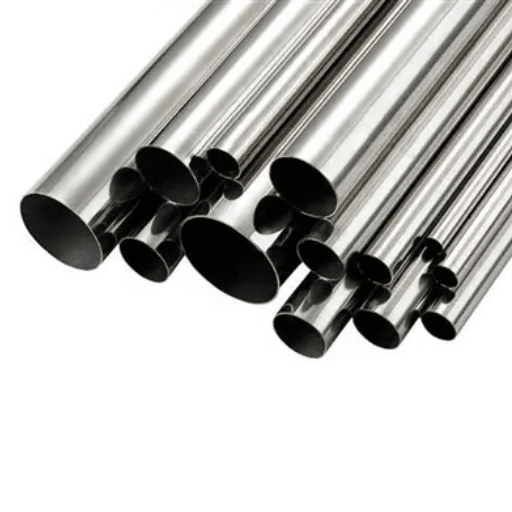
Sanitary tubing is subjected to a wide range of standards in order to guarantee that the materials used in the manufacturing process are safe, the quality is up to par, and the performance is suitable in the food, pharmaceutical, and biotechnology industries. The following are the five major standards of the industry that state the specifications of sanitary tubing, its requirements, and its applications:
ASTM A270
Describes the characteristics required for the stainless steel sanitary tubing that is to be used in food, dairy, and pharmaceutical environments. The areas of focus are corrosion resistance, hygienic properties, and correct surface finishing.
ASME BPE
The Bioprocessing Equipment (BPE) standard applies to tubing and fittings in biopharmaceutical applications and insists on ultra-high-purity requirements. It details the surface finish, bore-scope inspection, and compliance with sterility standards as the strictest aspects of the guidelines.
ISO 1127
Sets the dimensions, tolerances, and materials for both seamless and welded stainless steel tubes. It is the main standard for the hygienic use of the tubes in the industries that demand high precision and accurate dimensions.
3-A Sanitary Standards
The focus is on hygienic design and cleanability for equipment and tubing in the food, beverage, and dairy industries. This standard makes sure that the materials are appropriate for direct contact with consumer products
EHEDG Guidelines
The guidelines offered by the European Hygienic Engineering and Design Group (EHEDG) are aimed at hygienic design and the engineering practices that will eliminate the risk of contamination and facilitate cleaning.
Standards that function in harmony with one another provide critical support to the sanitary tubing industry by identifying the most suitable applications requirements, thus ensuring performance and hygiene in all sectors.
3-A Sanitary Standards
The 3-A Sanitary Standards are a wide-ranging set of rules in the form of guidelines that were drawn up with the intention to promote hygienic design and fabrication in the dairy, food, and pharmaceutical manufacturing industries, among others. These standards not only guarantee the safety of the product, but also prevent contamination during the production process, and even facilitate cleaning with the 3-A standards in place. Five key 3-A Sanitary Standards are mentioned here as follows:
3-A SSI 01- Standards for equipment in contact with milk and dairy products, thereby ensuring cleanliness and ease of maintenance.
3-A SSI 18 – The design of pipelines and fittings that are intended for use in food processing systems is such that they can be easily cleaned, and that is the basis of these standards.
3-A SSI 36- Guidelines for hygienic construction of processing tanks and vessels that are used for the handling of consumable liquids.
3-A SSI 63- The specification of the design and the type of material that will be used in the production of gaskets and seals for sanitary applications.
3-A SSI 74- These are the standards for the production of pumps and other components that handle consumable products and that they are safe microbiologically.
The compliance of manufacturers with these standards is a guarantee not only of safer and efficient systems but also of maintaining hygiene and quality in the production areas.
ASTM A269 and A270 Specifications
ASTM A269 and A270 provide guidelines and quality standards for stainless steel tubes mainly used in the sanitary and industrial areas. ASTM A269 includes both seamless and welded pipes for general corrosion resistance in all types of environments, while ASTM A270 is meant for sanitary use only and provides very high quality in terms of cleanliness and surface finish. By following these specifications, I make sure that the raw materials used in manufacturing not only comply with but also surpass the performance and safety standards.
Importance of Compliance in Sanitary Processes
In all industries, such as food processing, pharmaceuticals, and biotechnological manufacturing, compliance in sanitary processes is regarded as a major contributor to product safety and quality, as well as to the meeting of regulatory requirements. For instance, by following ASTM A270 requirements, it is guaranteed that the stainless-steel tubing used in the manufacturing process has met it’s hygiene as well as corrosion resistance requirements and thereby the risk of contamination is greatly reduced. Google’s search trends data suggest that sanitary compliance has been getting more and more traction lately, especially due to food safety awareness among consumers and health regulations worldwide. It reinforces the need for not only using certified materials and following precisely the standards to be able to get the end products that are safe but also the trust of consumers and authorities in such products.
References
-
Sanitary Fittings and Tubing for Food Processors
This source discusses the standardization and specifications of sanitary tubing in the food processing industry.
Link to source -
Ecotoxicological Responses of Eisenia Andrei Exposed in Field-Contaminated Soils by Sanitary Sewage
This study explores the environmental impact of sanitary systems, providing insights into material suitability.
Link to source -
Cost-Effective, Sanitary Shallow Water Wells for Agriculture and Small Communities
This research highlights the use of sanitary tubing in water well installations for agricultural and community applications.
Link to source
Frequently Asked Questions (FAQ)
What is sanitary tubing, and why is it important in the beverage industry?
Sanitary tubing, often made from materials like 304 stainless steel, is essential in the beverage industry to ensure the safety and purity of liquid products. These tubing products are designed to meet stringent hygiene standards, minimizing contamination risks during the transportation of beverages.
What are the common sizes and lengths of sanitary stainless steel tubing?
Sanitary tubing sizes typically vary to accommodate different applications, with common lengths being per foot or in standard lengths such as 20 feet. The outer diameter (OD) can also differ based on the requirements of the system being used.
How do ASTM A270 and 3A sanitary standards relate to sanitary stainless steel?
ASTM A270 and 3A sanitary standards outline the specifications for sanitary stainless steel tubing and fittings. These standards ensure that the materials used in sanitary applications, such as 304 stainless steel, are suitable for maintaining the purity and hygiene of the products they convey.
What is BPE tubing, and how does it differ from standard tubing?
BPE tubing refers to Bio-Process Equipment tubing, which adheres to strict guidelines for sanitary applications, ensuring a higher level of cleanliness compared to standard tubing. BPE tubing is often used in the pharmaceutical and food industries where maintaining purity is crucial.
What are the benefits of using bright annealing in sanitary stainless steel tubing?
Bright annealing is a process that enhances the corrosion-resistant properties of stainless steel, such as 304 stainless steel. This treatment results in a smooth, polished finish that helps maintain purity by reducing surface contamination in sanitary tubing applications.
How is the heat number relevant when selecting sanitary stainless steel tubing?
The heat number is essential for traceability in the manufacturing process of sanitary stainless steel tubing. It identifies the batch of steel used, ensuring compliance with ASTM and ASME specifications, which is crucial for maintaining the integrity of sanitary processes.
What role do sanitary fittings and clamps play in the installation of sanitary tubing?
Sanitary fittings and clamps are critical components in the installation of sanitary tubing, providing secure connections while preventing leakage and contamination. Properly selected fittings ensure that the tubing maintains its sanitary integrity throughout its use.
Can you explain the significance of 20 μ-in finish in sanitary stainless steel tubing?
A 20 μ-in finish on sanitary stainless steel tubing refers to the surface roughness level, which is vital for maintaining purity in hygienic applications. This smooth finish reduces the likelihood of bacteria adhesion, ensuring that the tubing remains suitable for sanitary processes.
What are the advantages of using end caps in sanitary tubing applications?
End caps are used to seal the ends of sanitary tubing, preventing contamination during storage and transport. They help maintain the integrity of the system and are often utilized in applications where the tubing is not in continuous use.



